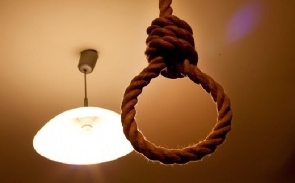One person dies every 40 seconds from suicide, the World Health Organisation (WHO) has said, warning that too few countries have prevention strategies in place.
According to WHO data, some 800,000 people die every year from suicide, with more than three-quarters of these deaths occurring in low and middle-income countries.
Suicide was the second leading cause of death among young people aged 15-29, after road injury, in 2016.
The United Nations agency said the most effective way to reduce the number of suicides would be for governments to restrict access to pesticides.
Russia, Lithuania, Belarus
Europe is disproportionately affected, with an average of 13 per 100,000 people dying by suicide in 2016 – higher than the global average of 10.5 per 100,000.
But there are wide disparities across the continent.
Greece and Finland both recorded 3.8 suicide deaths per 100,000 population in 2016 — the lowest rate on the continent. Cyprus and Italy rounded out the bottom three with respective rates of 4.5 and 5.5 per 100,000.
Some Eastern European countries, however, had rates more than double the global average. The worst-hit countries were Russia (26.5 per 100,000), Lithuania (25.7 per 100,000) and Belarus (21.4 per 100,000).
Belgium, France, and Ireland have the highest suicide rates in western Europe, with rates of 15.7, 12.1 and 10.9 per 100,000 respectively.
WHO deplored on Monday that only 38 countries around the world have national suicide prevention strategies.
“Despite progress, one person still dies every 40 seconds from suicide,” WHO Director-General Tedros Adhanom Ghebreyesus said.
“Every death is a tragedy for family, friends and colleagues, yet suicides are preventable. We call on all countries to incorporate proven suicide prevention strategies into national health and education programmes in a sustainable way,” he added.
The organisation added that one of the best ways to reduce suicides is to restrict access to means and called on governments around the world to restrict access to pesticides.
Pesticide poisoning is the second most common method of suicide, according to WHO, accounting for as many as one in five of the world’s suicides.
“Regulatory action in Bangladesh, the Republic of Korea, Sri Lanka and other countries indicates that many suicide deaths can be prevented by bans on specific pesticides. In Sri Lanka, for instance, bans are thought to have led to 93,000 fewer suicide deaths between 1995 and 2015,” it adds.
Data shows that suicide disproportionately affects men, with nearly three times as many men as women dying by suicide in high-income countries. Equal numbers of men and women take their own lives in low and middle-income countries.
WHO also flagged that for every person who dies by suicide around 20 people make suicide attempts. Their survival largely depends on the availability of intensive care facilities and effective treatments for some poisons.
It also sought to dispel a number of “common myths” including the wrongly held belief that those who are determined to take their life will do so eventually.
“Research shows that while a previous suicide attempt is a strong risk factor for suicide, most people who survive a suicide attempt do not go on to die by suicide, or even make a repeat attempt. If they survive, they usually go on to lead productive lives,” it highlighted.
General News of Wednesday, 11 September 2019
Source: gbconline.com

















